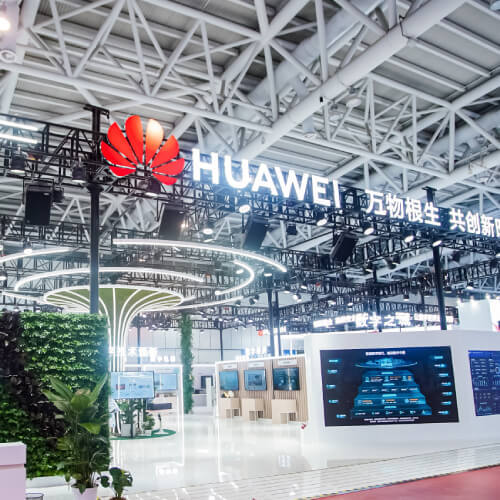After completing a massive three-year internal ERP project, Huawei is now eyeing advanced chip manufacture.

Huawei's analyst summit last month, the first in the post-covid era, was a modest affair.
Pre-pandemic, and prior to the outbreak of tech hostilities, a couple of thousand analysts and journalists would flock to Shenzhen, the highlight being a presentation by one of the 'rotating chairmen,' followed by an hour of candid Q&A.
This year the audience numbered a few hundred and the headline speaker was CEO daughter and newly-promoted rotating chair, Sabrina Meng. She delivered a sales pitch for Huawei's digital services and took no questions.
Never mind, the Huawei PR minder said. The company was dropping a "huge story" the next day.
This turned out to be true, at least if you were Chinese. The breaking news was the company had built its own ERP system, replacing the Oracle and SAP-based platform that had been sidelined by US sanctions.
Figure 1:  After completing a massive three-year internal ERP project, Huawei is now eyeing advanced chip manufacture.
After completing a massive three-year internal ERP project, Huawei is now eyeing advanced chip manufacture.
(Source: Huawei)
Doubtless few Chinese (or anyone else) could pass a test on ERP, but the news was joyfully received as yet another step toward technology independence and a blow against the 'containment and suppression' that national leaders are forever inveighing against.
In a ceremony at Huawei's faux European style Dongguan campus, CEO and founder Ren Zhengfei told software partners including Kingdee and Yonyou that after "fighting in the same trenches we have become inseparable."
Working for China's security
"We are still behind in today's software, but will we one day become powerful? It's quite possible. I feel we are fighting together with our partners. We are strengthening cooperation and working together for the security of this country."
Huawei described the ERP project as "the most extensive and complex transformation" it had ever undertaken, with several thousand staff working on it for three years. It didn't reveal the cost, but no doubt it is one reason for the heavy R&D spending that the company says has depressed its profit margin to a record low.
Other parts of last year's 161.5 billion Chinese yuan (US$23.4 billion) budget went to building advanced chip design automation tools and replacing some 13,000 foreign-sourced components with local substitutes – two other sanction-busting successes Huawei leaders have disclosed in recent months.
A Financial Times report Wednesday says the company is working on the potentially even more ambitious and impactful goal of rebuilding some of the chip manufacturing capability lost to sanctions.
It's reportedly working closely with Shanghai Micro Electronics Equipment, China's only manufacturer of lithographic machines. Last December Huawei applied for a lithography-related patent at the Chinese patent office.
One unnamed executive told FT it will "take more than three years" for the partners to produce equipment capable of replacing ASML's advanced kit. Currently SMEE's lithography tech is as much as two decades behind.
China has dropped tens of billions of dollars over the past 30 years in trying to build a world-class chip fab industry, with not much to show.
Want to know more? Sign up to get our dedicated newsletters direct to your inbox.
Huawei's big R&D budget and its track record in innovation are probably China's best hope in narrowing the gap.
Related posts:
— Robert Clark, contributing editor, special to Light Reading
Read more about:
AsiaAbout the Author(s)
You May Also Like











